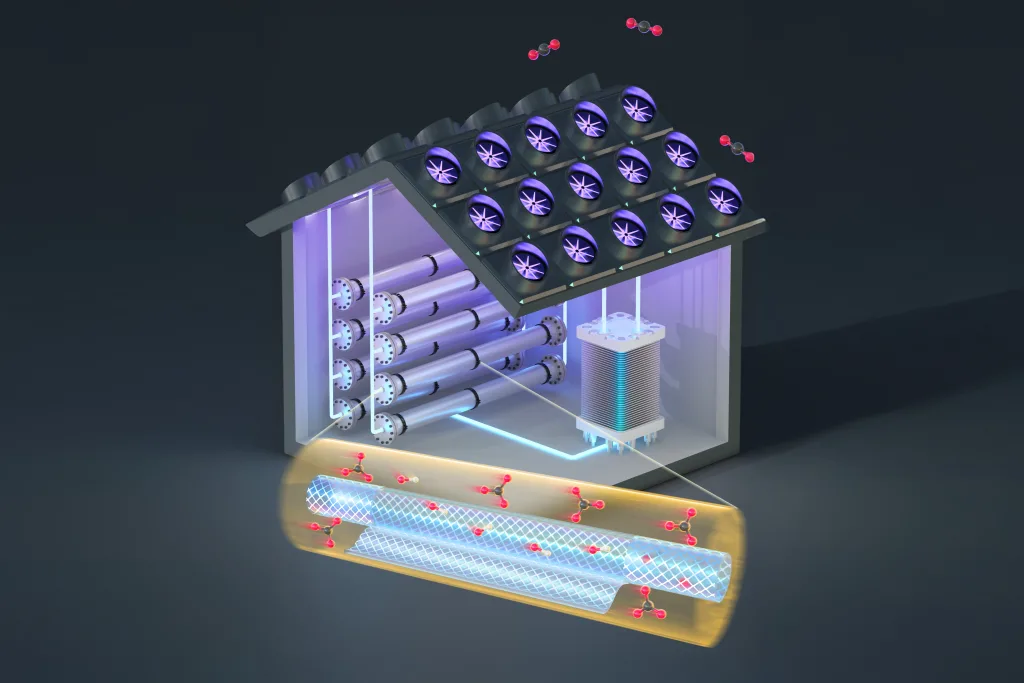Long-haul trucks are the backbone of global supply chains, responsible for delivering essential goods worldwide. In the United States alone, these trucks accounted for 71 percent of freight transportation in 2022. However, their heavy reliance on diesel fuel results in significant carbon emissions, posing a threat to our planet’s climate. The U.S. Environmental Protection Agency estimates that over 3 percent of all carbon dioxide (CO2) emissions in 2022 stemmed from long-haul trucking.
As the demand for freight transport is expected to potentially double by 2050, finding a cost-effective and cleaner energy source for these trucks has become imperative. According to William H. Green, the Hoyt Hottel Professor in Chemical Engineering and director of the MIT Energy Initiative, “Any increase in the cost of trucking will be felt universally.”
The Challenge with Diesel
Diesel fuel is the current mainstay for long-haul trucks due to its high energy density, allowing for larger payloads within legal weight limits. Additionally, diesel is widely accessible across retail refueling stations, making it convenient for drivers who may travel hundreds of miles daily without returning home.
Exploring Alternatives
Researchers have explored various alternative technologies for powering long-haul trucks, but no single solution has emerged as a clear front-runner. Recently, MIT’s Green and his team evaluated several options under realistic conditions to identify viable alternatives to diesel without relying on government subsidies.
Battery Electric Trucks
Battery electric trucks have gained traction in the automotive industry, but their application in long-haul trucking presents challenges. Using a physics-based vehicle model, the MIT team found that powering a truck for 600 miles would require a massive 2 megawatt-hour battery, weighing approximately 27,000 pounds. This weight drastically reduces payload capacity and significantly raises operational costs, making electrification less viable in the near term.
Though battery electric trucks offer a path toward decarbonization, their success ultimately hinges on the cleanliness of the electricity grid. As of now, over 60 percent of the U.S. power grid relies on fossil fuels, diminishing the projected emissions benefits of battery electric options, especially during initial phases of adoption.
Hydrogen: A Cleaner Alternative
Hydrogen emerges as a compelling alternative to diesel, boasting higher energy density without accompanying CO2 emissions. However, the challenge lies in its distribution and transportation costs. MIT researchers explored the potential of liquid organic hydrogen carriers (LOHCs), which allow for safe transport and on-site hydrogen release, thus sidestepping some of the high costs associated with traditional hydrogen distribution methods.
Onboard Hydrogen Release
Rather than attempting to release hydrogen at refueling stations, the researchers propose a system where hydrogen is generated onboard the truck. The loaded LOHC is transported to the truck, where exhaust heat from the engine facilitates hydrogen release. This innovative solution significantly lowers costs and emissions compared to conventional methods, even surpassing some diesel options, depending on the hydrogen source used.
The Path Forward
By employing LOHCs for onboard hydrogen generation, the proposed system could reduce emissions by 71 percent while remaining economically competitive with diesel fuel prices. Furthermore, the compatibility of this system with existing infrastructure ensures minimal disruption to current supply chains during the transition phase.
As researchers prepare to demonstrate the technology in laboratory settings in 2024, this novel approach holds promise not only for long-haul trucking in the United States but also for global adoption, potentially transforming how freight transport contributes to climate goals.
Photo credit & article inspired by: Massachusetts Institute of Technology



